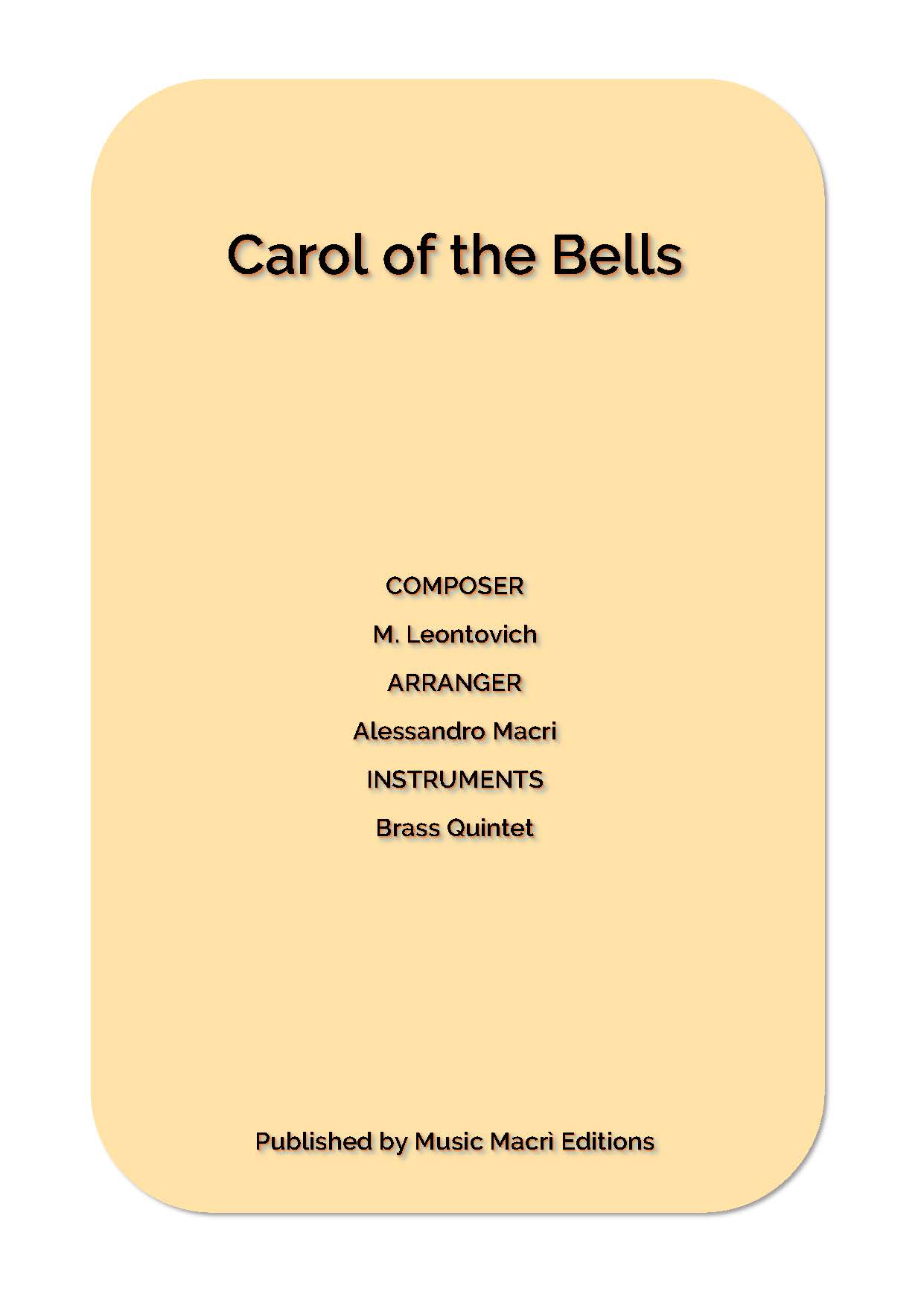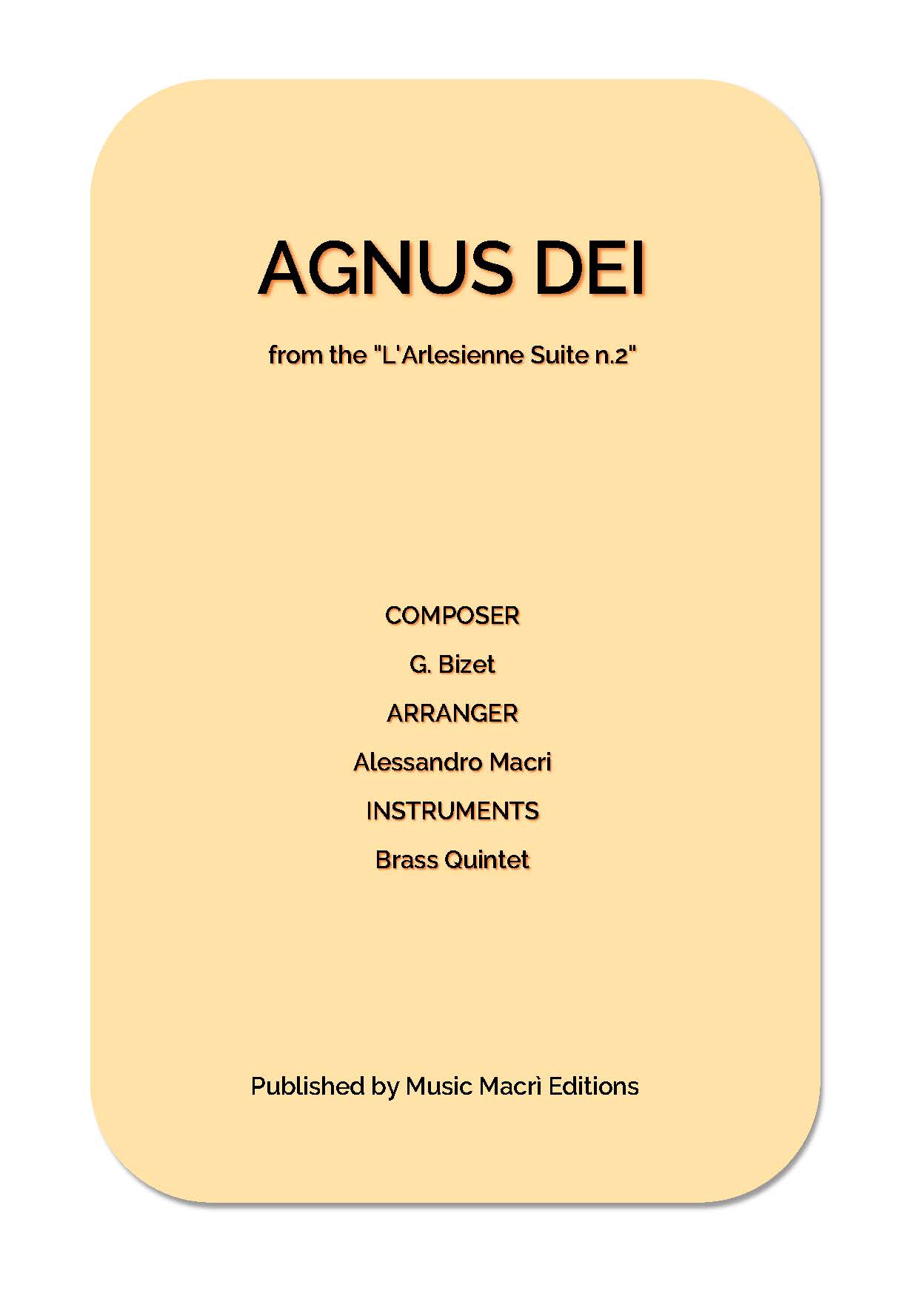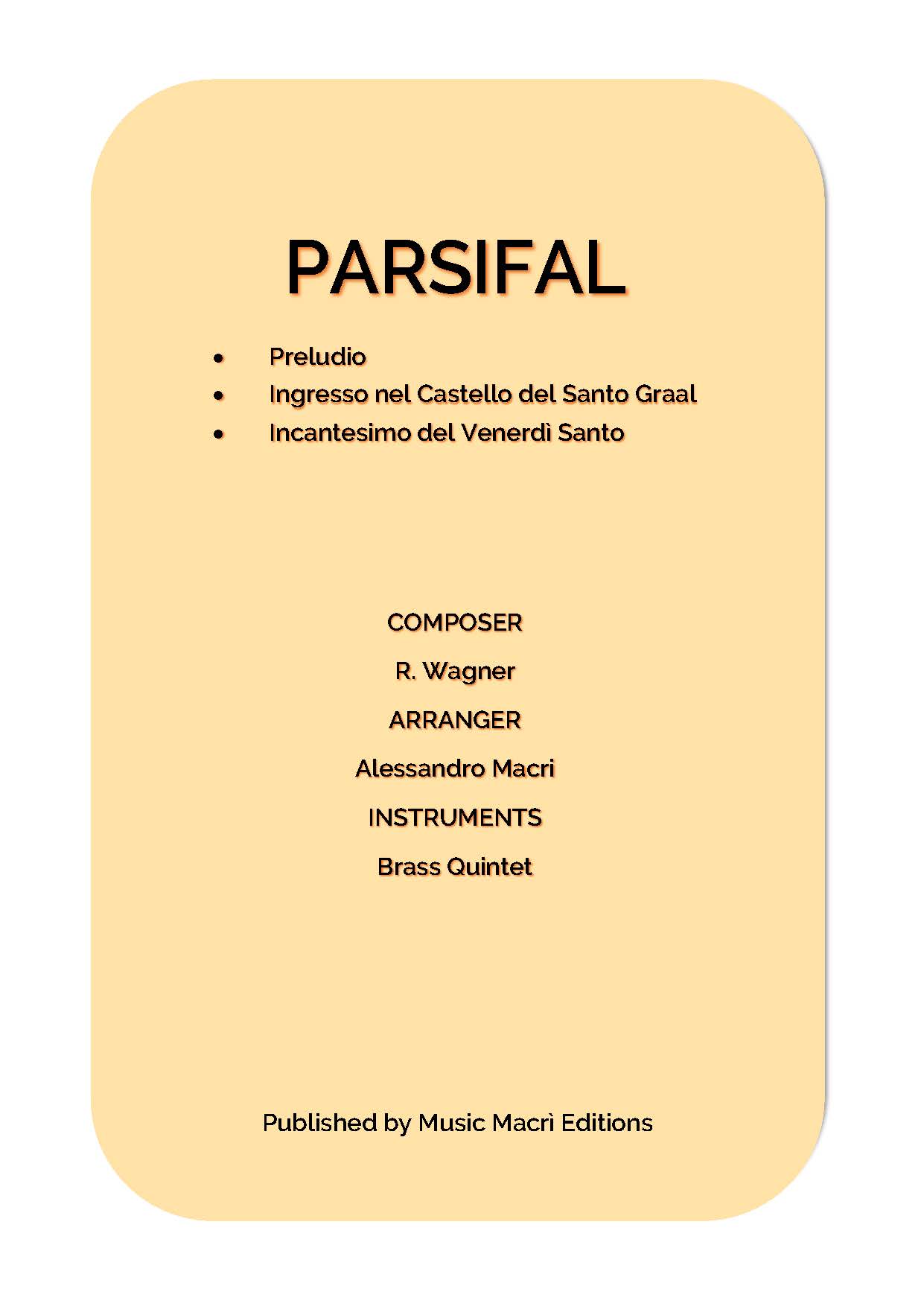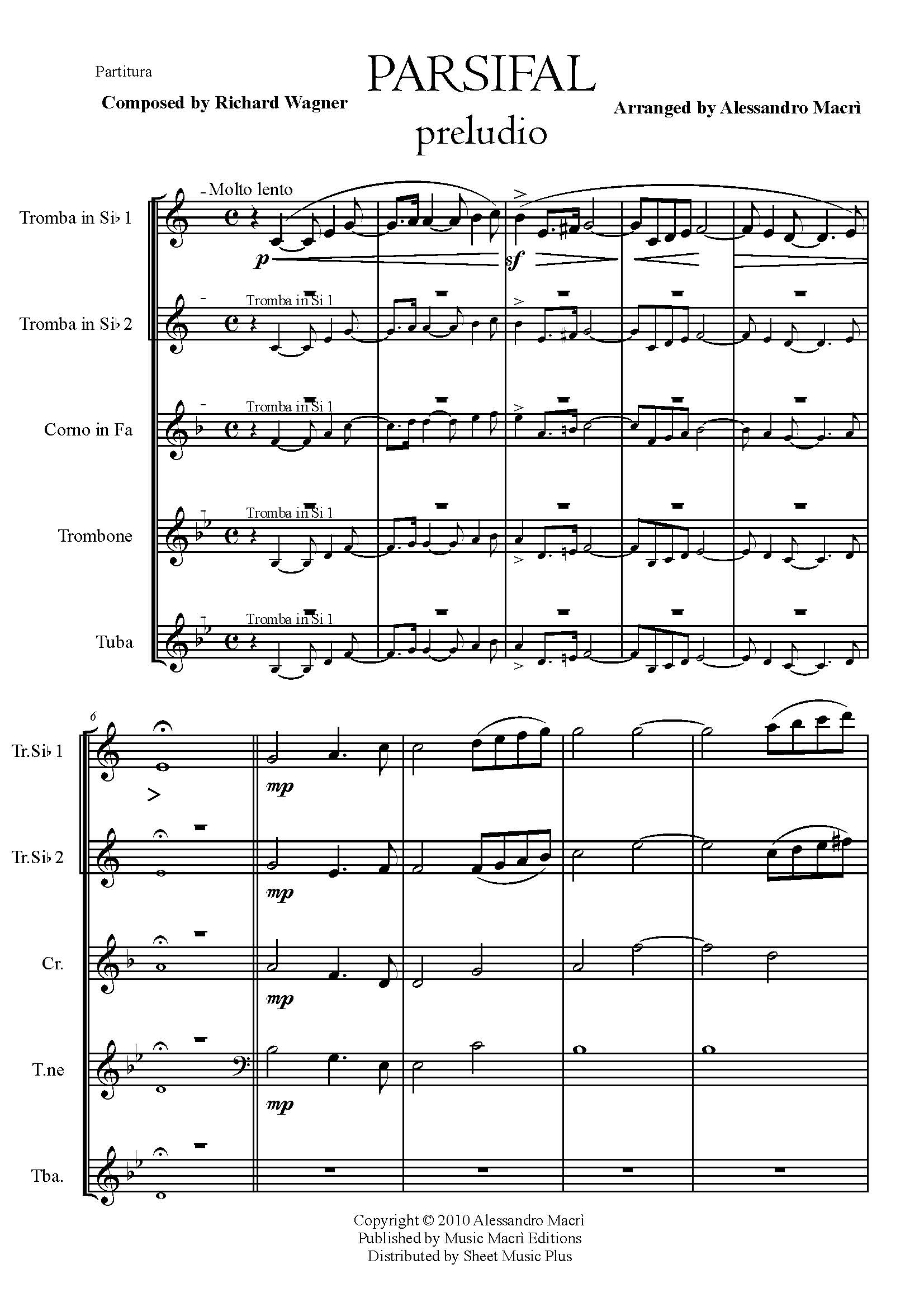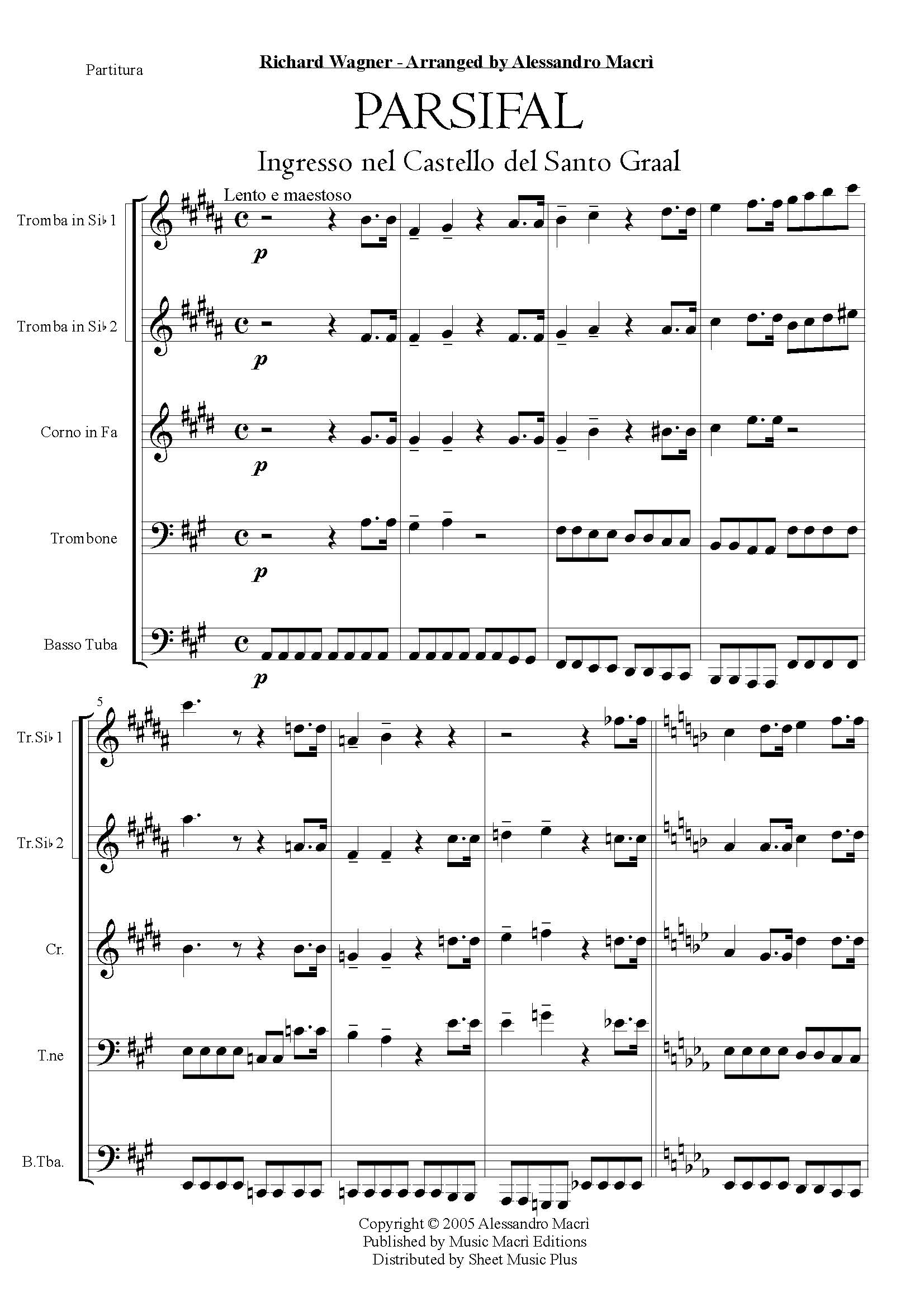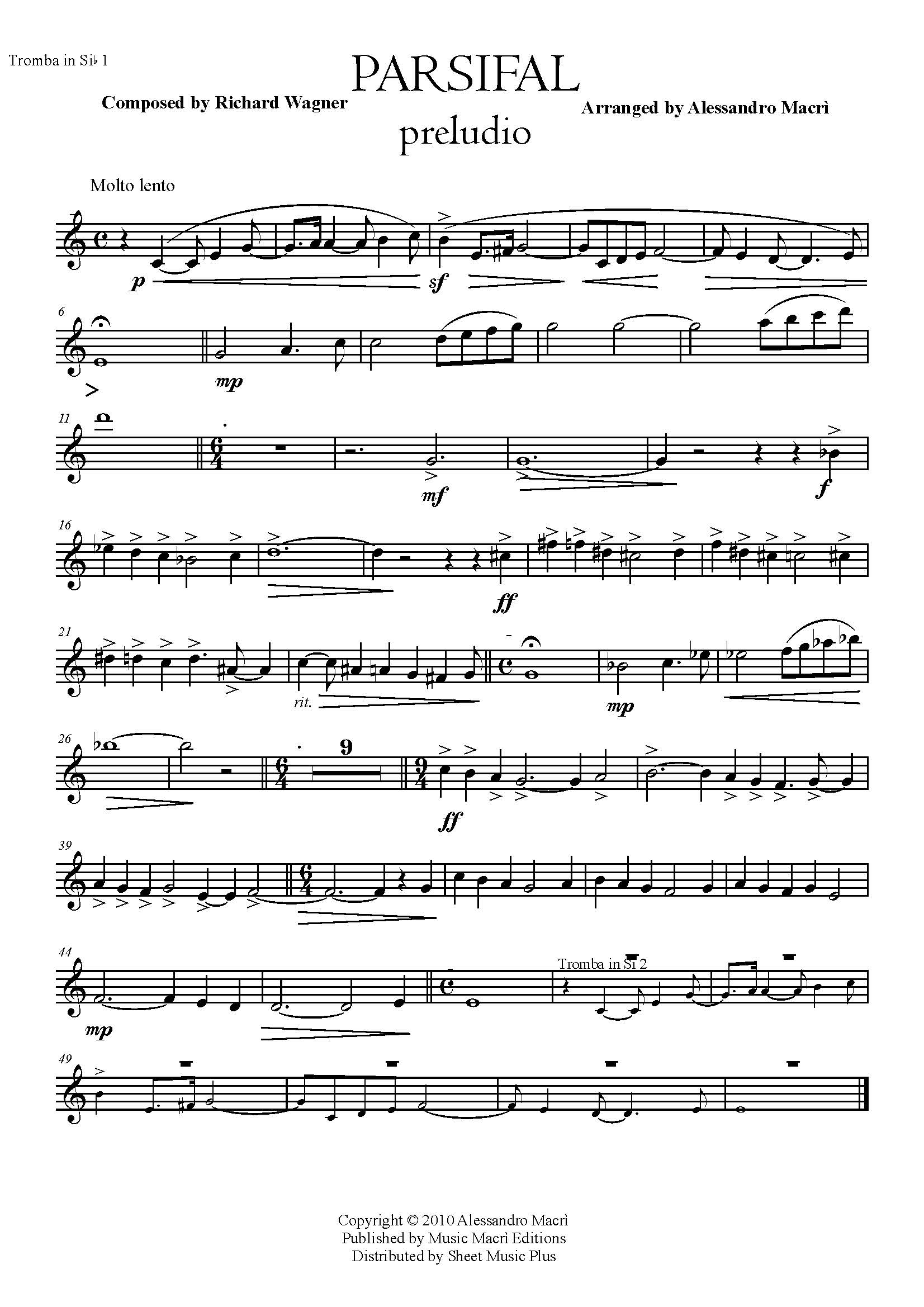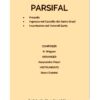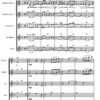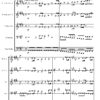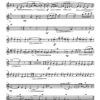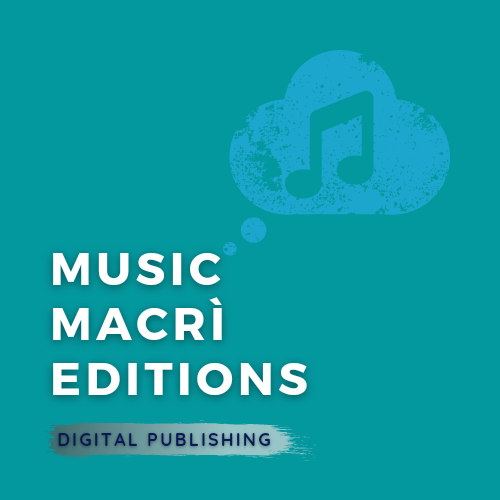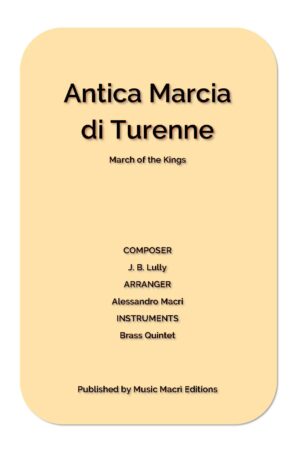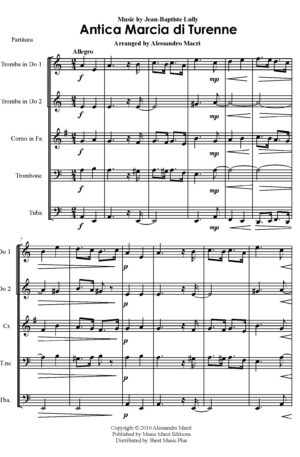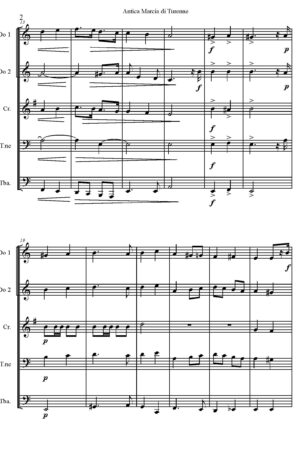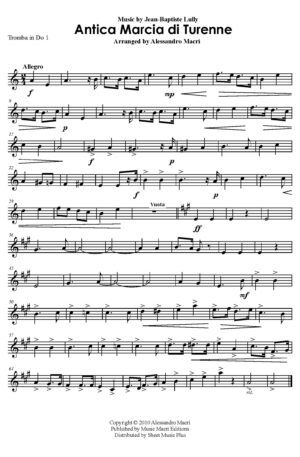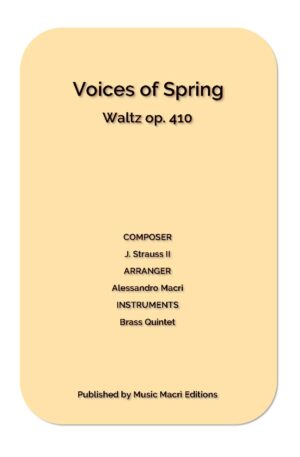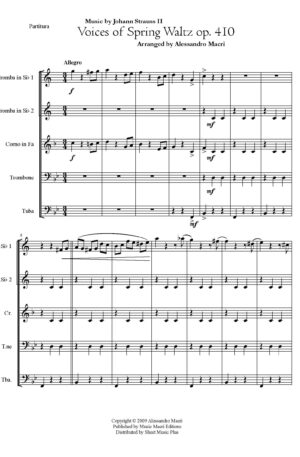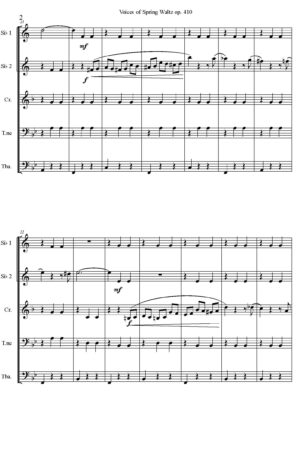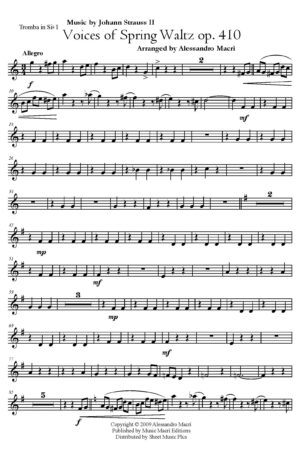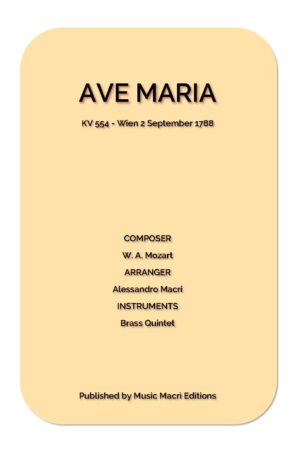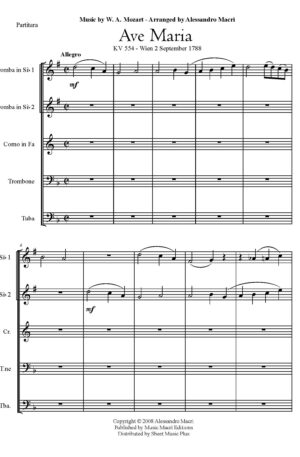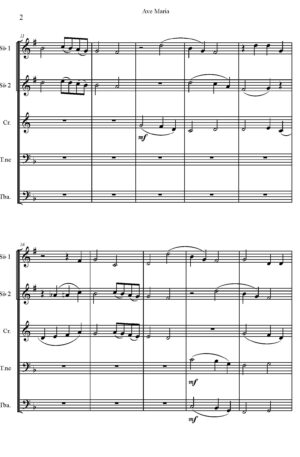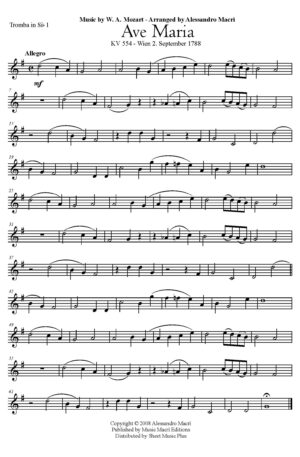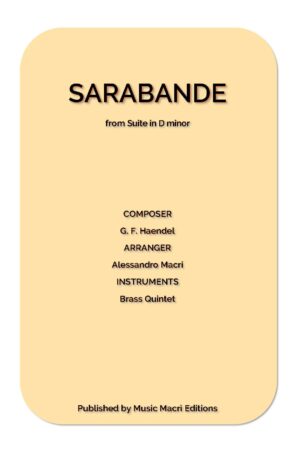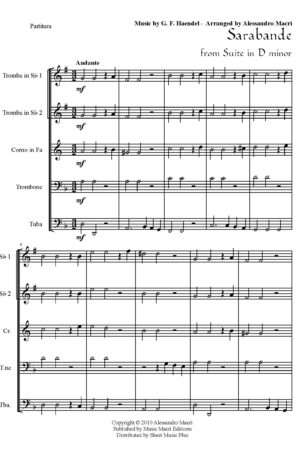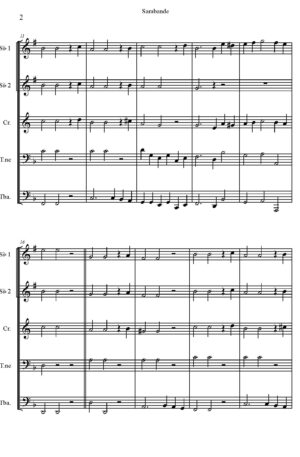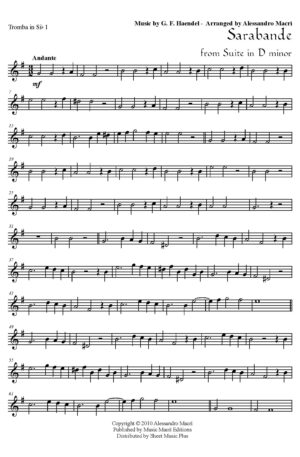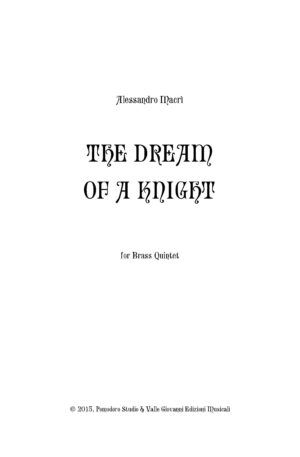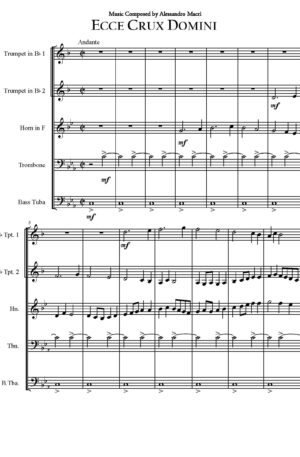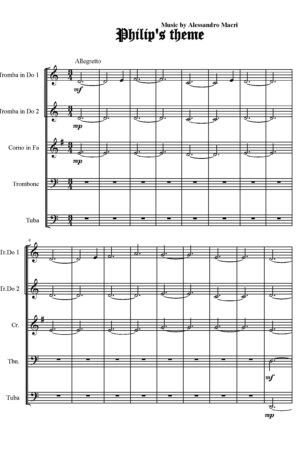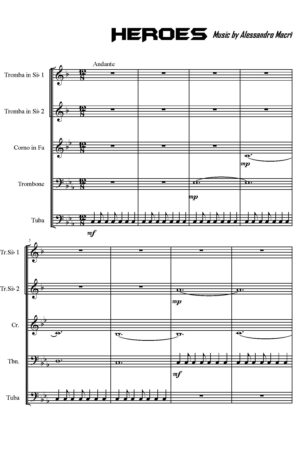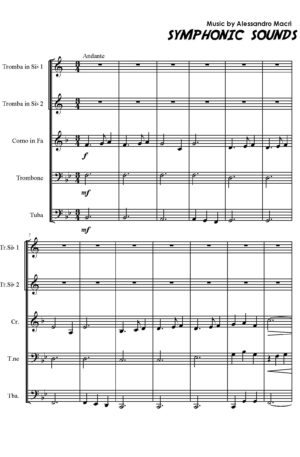PARSIFAL by Richard Wagner – Brass Quintet
Original price was: $20.00.$19.00Current price is: $19.00.
Description
Parsifal is Richard Wagner’s last musical drama, staged on 26 July 1882 at the Bayreuth Festival directed by Hermann Levi, but performed for the first time in European theaters only starting from 1 January 1914 with the “premiere” in Bologna with Giuseppe Borgatti.
After a gestation lasting several decades, the work was composed between 1877 and 1882 and marks the return to the theme of the Grail, already addressed many years earlier in Lohengrin. The prelude of the work was quoted in the film Hugs and Kisses (1998), and used as the soundtrack in the film Excalibur (1981).
The arrangement is divided into three parts:
1. Prelude
The symphonic introduction exposes the motif of the Last Supper with extraordinary breadth, articulated with the theme of Faith in a speech interrupted by long silences. The atmosphere of the highest sacredness is revealed from the first bars of the prelude, connecting directly to the scene of the first act. In a wooded clearing near the monastery, the knights wake up at sunrise; among them is the elder Gurnemanz, the wisest guardian of the virtue and history of the Holy Grail. The wild Kundry arrives at a gallop, appearing in the sincere guise of a friend of the knights. The woman has with her a medicinal herb from Arabia, thinking that it can help soothe Amfortas’ wound. After a reference to the Savior’s prophecy, Amfortas is led to the lake for his daily ablution, while nature smiles in the morning sun.
2. Entrance into the Castle of the Holy Grail
The themes of Klingsor and Magic comment on the brief orchestral prelude, while the scene reveals the interior of a fabulous Arab palace: Klingsor, looking into his magic mirror, observes Parsifal coming towards the castle. Only the enemy of the Grail recognizes the pure madman who could redeem the knights, and therefore draws him into Kundry’s deadly embrace. The evocation of the woman reveals her reincarnated past: wasn’t it already Herodias who laughed in the Baptist’s face? So Klingsor calls her and forces her to fulfill her punishment. But despite being in terrible suffering, Kundry laughs in his face too, mocking the chastity that he shares with the knights of the Grail.
3. Good Friday Spell
This scene is another key point of the opera, undoubtedly one of Wagner’s most inspired musical moments, illustrating how the nature surrounding the characters reflects the sanctity of the day, revealing itself in all its splendor.
Parsifal è l’ultimo dramma musicale di Richard Wagner, andato in scena il 26 luglio 1882 al Festival di Bayreuth diretto da Hermann Levi, ma rappresentato per la prima volta nei teatri europei solo a partire dal 1º gennaio 1914 con la “prima” a Bologna con Giuseppe Borgatti.
Dopo una gestazione lunga alcuni decenni, l’opera fu composta tra il 1877 e il 1882 e segna il ritorno al tema del Graal, già affrontato molti anni prima in Lohengrin. Il preludio dell’opera è stato oggetto di citazione nel film Baci e abbracci (1998), ed usato come colonna sonora nel film Excalibur (1981).
L’arrangiamento è diviso in tre parti:
1. Preludio
L’introduzione sinfonica espone con straordinaria ampiezza il motivo dell’Ultima Cena, articolato col tema della Fede in un discorso interrotto da lunghi silenzi. L’atmosfera di altissima sacralità si rivela fin dalle prime battute del preludio, collegandosi direttamente alla scena del primo atto. In una radura boscosa nei pressi del monastero, i cavalieri si destano al sorgere del sole; tra di loro è l’anziano Gurnemanz, il più saggio custode della virtù e della storia del Santo Graal. Giunge al galoppo la selvaggia Kundry, che appare nelle sincere vesti di amica dei cavalieri. La donna ha con sé un’erba medicamentosa proveniente dall’Arabia, pensando che possa servire per lenire la piaga di Amfortas. Dopo un accenno alla profezia del Salvatore, Amfortas viene condotto sul lago per l’abluzione giornaliera, mentre la natura sorride al sole del mattino.
2. Ingresso nel Castello del Santo Graal
I temi di Klingsor e della Magia commentano il breve preludio orchestrale, mentre la scena rivela l’interno di un favoloso palazzo arabo: Klingsor, guardando nel suo specchio magico, osserva Parsifal venire verso il castello. Solo il nemico del Graal riconosce il puro folle che potrebbe redimere i cavalieri, e lo attira dunque nell’abbraccio mortale di Kundry. L’evocazione della donna ne rivela il passato reincarnato: non fu già l’Erodiade che rise in faccia al Battista? Così Klingsor la chiama e la obbliga ad adempiere al proprio castigo. Ma pur preda di terribili sofferenze, Kundry ride in faccia anche a lui, beffeggiando la castità che lo accomuna ai cavalieri del Graal.
3. Incantesimo del Venerdì Santo
Questa scena è un altro punto chiave dell’opera, senza dubbio uno dei momenti musicali più ispirati di Wagner, che illustra come la natura che circonda i personaggi riflette la santità del giorno, rivelandosi in tutto il proprio splendore.

